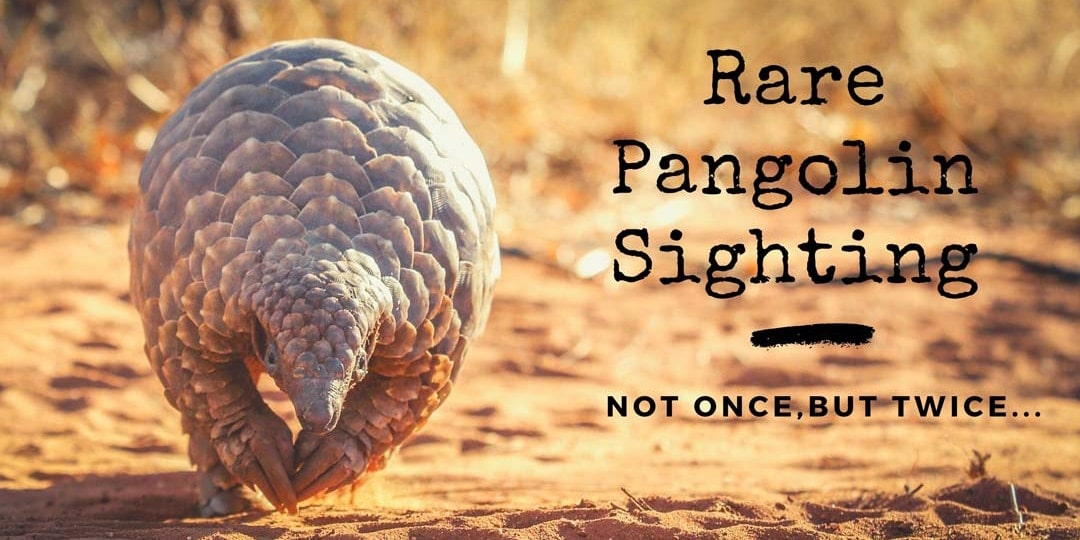If you’ve ever dreamed of witnessing one of Africa’s rarest wildlife encounters, our adventure will captivate you. In the heart of the African bush, we stumbled upon not one but two of these elusive creatures that even seasoned rangers marvel at – the pangolin.
This isn’t just any wildlife sighting. It’s a story of our unexpected encounters with one of nature’s most mysterious and endangered mammals that few have the privilege to see. Join us as we recount the magical moments of spotting two pangolins in the wild. The memories are etched in our hearts forever.
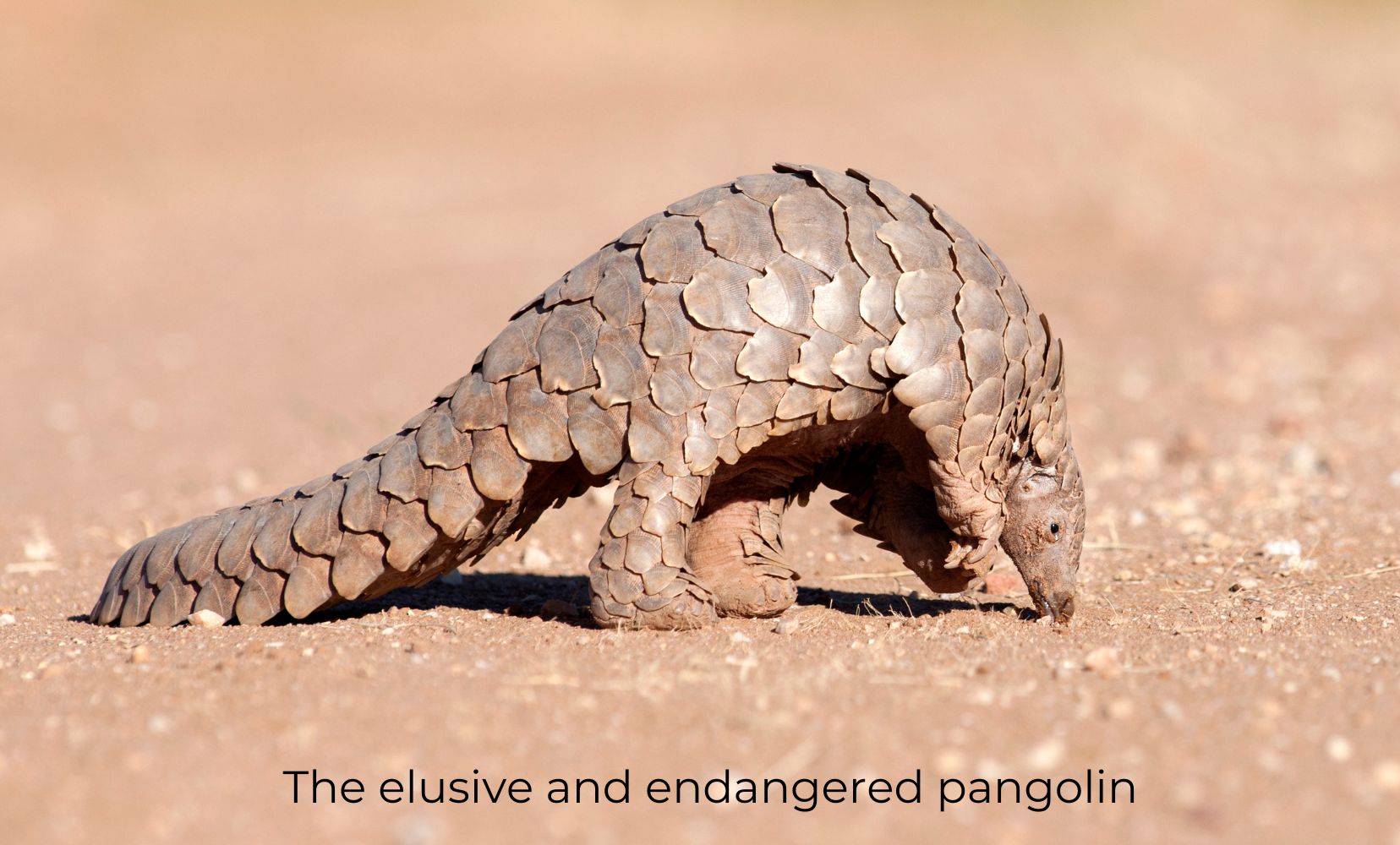
Finding Pangolins in Africa: In a Nutshell
Rare Sighting
We spotted two pangolins in South Africa, first in Klaserie Nature Reserve and then in Kruger National Park. Such sightings are extremely rare and highly valued in the safari world.
Unique Creature
Pangolins are scaly, nocturnal mammals known for their unique defence mechanism of curling into a ball when threatened. They primarily feed on ants and termites using their long, sticky tongues.
Threats and Conservation
Pangolins are the most trafficked mammals in the world due to the high demand for their meat and scales in traditional medicine and luxury markets. All eight species are endangered, with populations rapidly declining.
Our Experience
The first sighting was a magical moment as the pangolin slowly emerged from the bush. The second was even more surprising as it occurred in broad daylight, contrary to their nocturnal nature.
Conservation Efforts
We emphasize the importance of protecting these creatures. You can help by raising awareness, participating in World Pangolin Day, and supporting organizations like WWF.
Quick Tips for Pangolin Spotting
If you find a pangolin, keep a safe distance (at least 10 meters) to avoid stressing the animal. Never approach a pangolin with a pangopup, as they are particularly vulnerable.
A Mysterious Rustle in the Bush
Branches snapped.
Brushwood crackled.
We stared intently at the thicket, trying to glimpse whatever was there, interrupting the gentle hum of the African bush.
Slowly, scale by scale, the intriguing creature emerged.
It’s a strange feeling when you see something completely unfamiliar. Your brain tries to make sense of it, but you’re left with more questions than answers.
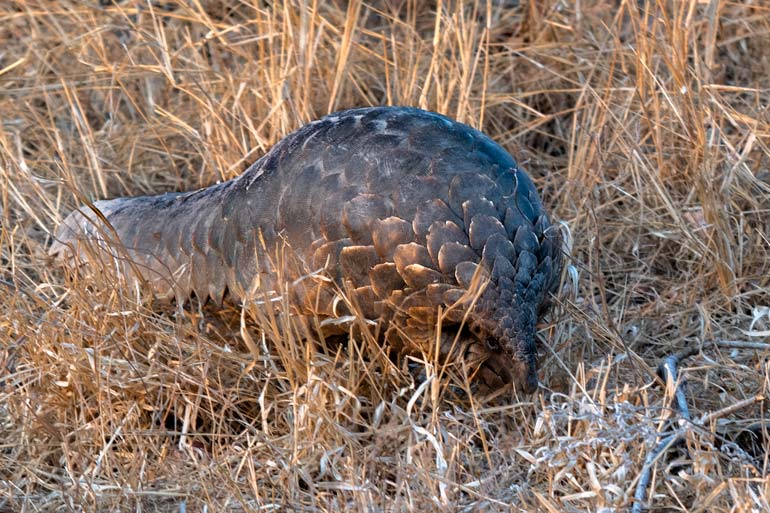
Which end was which?
Was it dangerous?
Had we stumbled upon a new species from the dinosaur age?
This looked like something from Dr Who – a giant scaly, slug-like creature trundling towards us.
Guessing it was the head up front and the animal wasn’t walking backwards, I searched for a face among the mesmerizing pattern of overlapping brown scales.
Then, two tiny eyes on the cutest elongated snout met mine… My heart melted.
Encounter with the Elusive Pangolin
The creature stopped in its tracks, aware it had an observer.
Luckily, Lars had been studying bush books back at camp. Each morning, he’d examine the sand impressions to identify which wild animals visited us while we slept. He’d read about pangolins and now excitedly reported that one was approaching us.
Watch the story of our first rare pangolin sighting in this video.

We didn’t want to scare it, but Lars managed to get some shots, and I captured a video on my iPhone. I didn’t grab my proper camera because I was too caught up in the moment, trying to take it all in.
As the light faded, the distant roars of lions rumbled across the South African bush. We left the pangolin to continue on its way.
A Safari Surprise: Twice the Pangolin Magic
After a couple of months living in Klaserie Nature Reserve in Greater Kruger, we spent the next two months on a self-drive safari in Kruger National Park, among the amazing animals of Kruger.
The Unexpected Encounter: A Pangolin in Broad Daylight
One early afternoon, after a fruitless morning drive, we were heading back to camp in our 4×4 Bush Camper when I spotted a strange shape ambling across the road.
The strange shape turned out to be our second rare pangolin sighting. Lars quickly opened the car door to get a better shot, but the little creature must have heard our vehicle. It stopped in its tracks and curled into its defensive pose.

What was even stranger about this sighting was that it was 12:30 pm. Pangolins are generally nocturnal, so seeing this little gem in the middle of the day was a big surprise.
With nature’s unpredictability at its best, we witnessed our second rare pangolin sighting.
Safari Reflections: Reliving the Rare Moment
Hardly believing our luck, we drove back to camp. We didn’t talk much, caught up in the magic. We replayed the scene over and over, trying to capture each precious moment before it slipped from memory.
“Did you have many sightings?” our camp neighbour asked as we began unrolling our shade awning.
Before we could answer, he told us about the pride of seven lions he and his wife had followed along the river. We listened patiently, with an undercurrent of excitement. Then, the conversation turned back to our day.
“We didn’t see much, only a pangolin…”
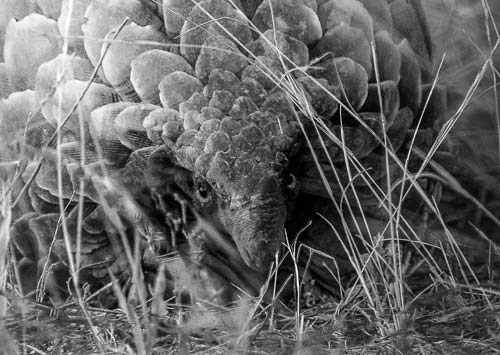
Safari Bragging Rights
Many people we spoke to afterward, who had lived in or near the greater Kruger area, had never seen a pangolin.
And there we were, seeing one just a few weeks after arriving in the South African bush.
Certain wildlife sightings give you a lifetime of safari bragging rights, and a pangolin is the ultimate trump card.
At the time, we hadn’t realised how rare and coveted our encounter was. Nor did we realise how threatened these endearing animals are, suffering cruel fates in the illegal trafficking trade.
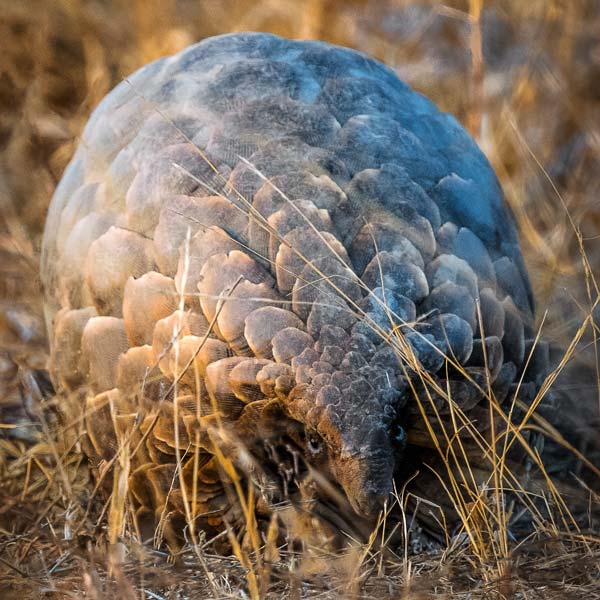
Planning a Trip to South Africa?
- 🚗 Hiring a car? We recommend getting a quote from DiscoverCars
- 🚐 Hiring a campervan? We recommend Motorhome Republic
- ⛑ Arranged your travel insurance? Compare quotes from World Nomads & Safetywing
- 🪪 Order your International Driver’s Licence online here
- 🏩 Booked your accommodation? We use Booking.com to find the best deals
- 🐾 Is someone pet-sitting for you? 🐾 We use and love TrustedHousesitters
- (Get 25% off at checkout for new memberships with our discount code: LIFEJOURNEY25)
Pangolins: Nature’s Shy Wonders
Pangolins are the most trafficked mammals in the world. Despite existing for over 40 million years, their survival is now at risk.
Pangolins are one of the least menacing animals – unless you are an ant or a termite, which will likely meet their demise on its long, sticky tongue.
Pangopups
Pangolins are shy, solitary animals, mating only once a year. The female gives birth to one pangopup.
The pup stays in the burrow for the first 2-4 weeks. Later, the mother carries it on her back. At 3 months, the pangopup is independent but stays near its mother for about a year.
Pangolin’s Defensive Armour
The pangolin’s keratin scales (the same material as our fingernails) act as defensive armour, protecting them from predators. When threatened, the pangolin curls into a ball, making it hard to harm.
Unfortunately, this defence mechanism is ineffective against human poachers and doesn’t help them escape when caught in electric fences.
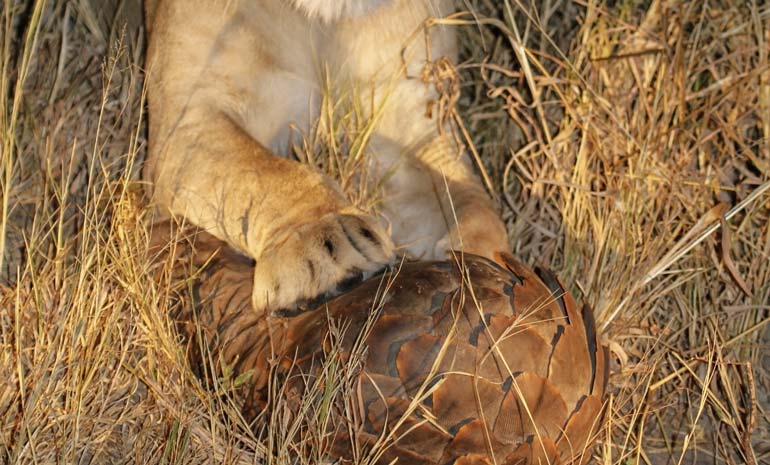
The name pangolin comes from the Malay word ‘pengguling’, meaning ‘something that rolls up’. Their low birth rate and ease of capture make the fight against poaching and trafficking crucial for their survival.
Critically Endangered
There are eight species of pangolin, four in Asia and four in Africa. All are listed as endangered on the IUCN Red List, ranging from vulnerable to critically endangered, with populations declining.
The pangolin species we saw was Temminck’s Ground Pangolin (Smutsia temminckii), the most widespread African species.
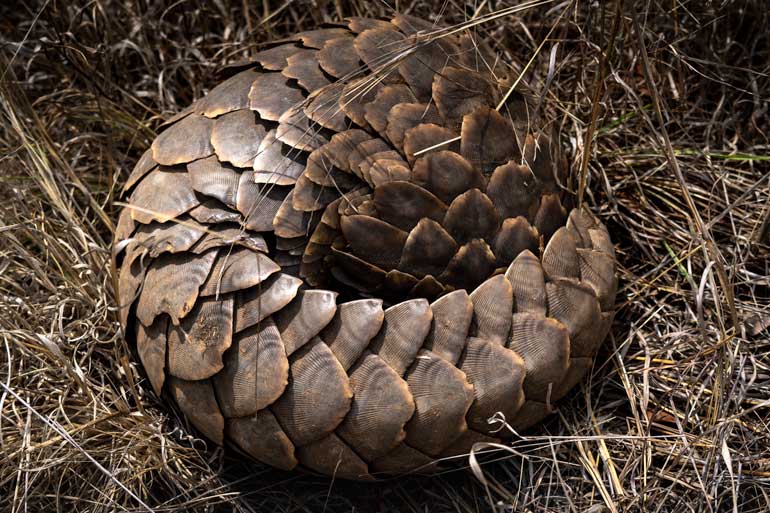
The Plight of Pangolins: Myths and Markets
Their meat and scales are valuable, especially in China and Vietnam. The meat is considered a delicacy among wealthy Asians and a symbol of socioeconomic status.
Pangolin fetuses and pangopups are used in soup and soaked in rice wine. Their scales are used in traditional Chinese medicine and to make jewellery and amulets.
The medicinal and health claims of pangolin meat and scales are numerous, but there is no scientific evidence to support these claims. Similarly, rhino horns, which are also made of keratin, are believed to have health benefits but do not.

According to the WWF, an estimated 195,000 pangolins were killed in 2019, with over one million killed in the previous ten-year period. – the situation is heartbreaking.
Frequently Asked Questions About Pangolins
Are there pangolins in South Africa?
Yes, South Africa is home to one of the four African pangolin species, the Temminck’s Ground Pangolin. They can be found in various habitats across the country.
Where do you find pangolins in South Africa?
We saw pangolins in Klaserie Nature Reserve and Kruger National Park. They have also been seen in the Northern Cape and the Karoo.
What to do if you find a pangolin?
If you come across a pangolin, keep a distance of at least 10 metres, doubling that if they have a pangopup. Pangolins stress easily, which can affect their welfare. If they curl into a ball or stay still close to the ground, they are showing stress symptoms.
Are pangolins rare?
Yes, pangolins are extremely rare due to their elusive nature and the unfortunate reality of being the most trafficked mammal in the world.
Are pangolins dangerous?
Pangolins are not dangerous to humans. They are shy, solitary animals which feed on ants and termites. Their primary defence mechanism is to curl up into a ball when threatened.
How many pangolins are left?
It’s challenging to determine the exact number due to their elusive nature and the illegal wildlife trade. However, all eight species of pangolins are listed as threatened or endangered, with their populations declining.
Conservation in Action: Protecting Pangolins?
So, what can you do to help protect pangolins?
- Help raise awareness by telling your friends and family about them and sharing images and posts on social media.
- World Pangolin Day is on the 3rd Saturday of February each year – make a special effort to share photos and posts to increase awareness on this day – use hashtag #worldpangolinday
- Donate to WWF to help protect wildlife, habitats, and communities worldwide.
Finding a pangolin in Africa… That’s a Wrap
As we reflect on our incredible encounters with the elusive pangolin, we’re reminded of the fragile beauty of the natural world.
These sightings weren’t just a stroke of luck; they were a poignant reminder of nature’s wonders and the importance of conservation. Witnessing such a rare creature in its natural habitat is a privilege that comes with responsibility.
It inspires us to be more conscious travellers, respecting the ecosystems we explore.
We share this story not just to recount an extraordinary experience but to encourage others to cherish and protect these remarkable creatures for future generations to witness.
Pin and Save for Later
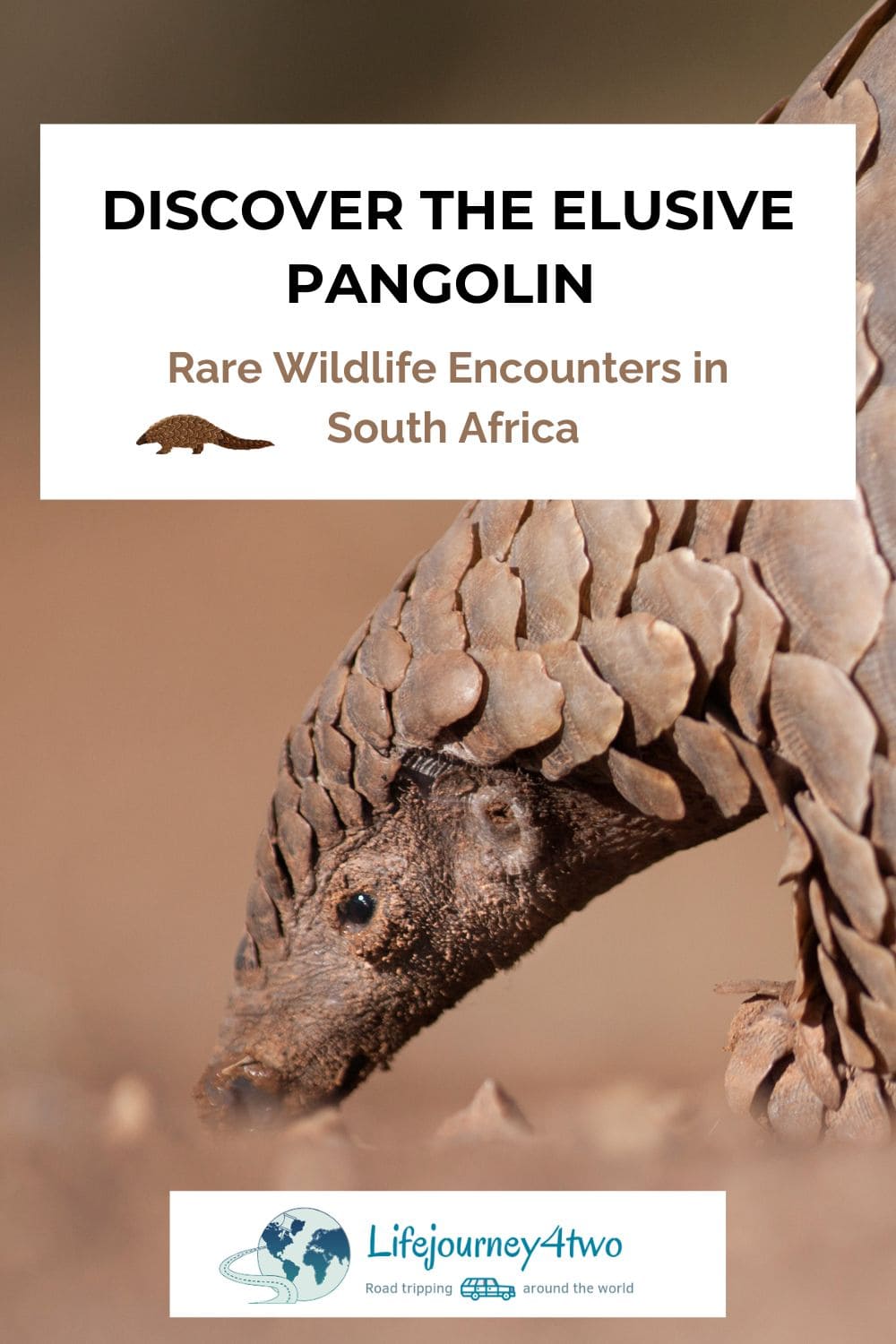
Planning Your Travels?
These are the travel resources we recommend and use when planning our trips.
- 🚘 Car Hire: We use DiscoverCars.com
- Motorhome/Campervan Rental: We highly recommend the Motorhome Republic
- 🪪 Order your International Driver’s Licence online here
- ✈️ Flights: Find flights on Skyscanner
- 🛏 Book Accommodation: We use Booking.com to find accommodation that suits our budget
- 🐶 Pet Sitting/Pet Sitters: Check Out TrustedHousesitters here (Use our Discount code: LIFEJOURNEY25 for 25% off. )
- Activities and Experiences: Get Your Guide and Viator
- Travel Insurance: Safetywing or World Nomads
- 🥾 Travel Gear and Accessories: Check out our top picks here — Lifejourney4two page on Amazon
For a more thorough list, visit our Travel Resources page here.

